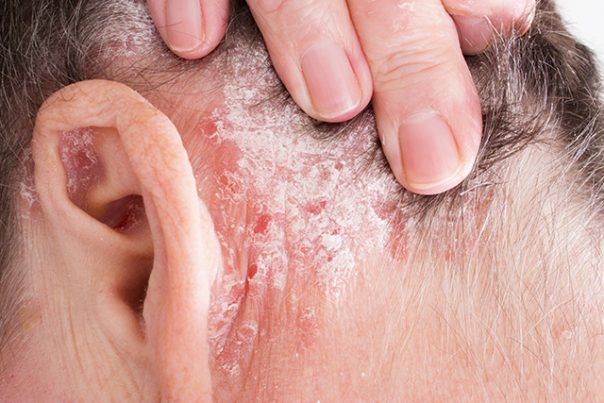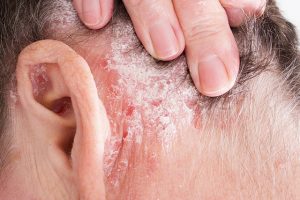
Plaque psoriasis – causes, side effects and treatments at NaturalPedia.com
Tuesday, June 12, 2018 by Carol Anderson
http://www.naturalpedia.com/plaque-psoriasis-causes-side-effects-and-treatments-at-naturalpedia-com.html

Plaque psoriasis is a chronic autoimmune disease, which causes the skin to dry, turn red, and become scaly and flaky. Often, it looks like red bumps which grow big and become inflamed when triggered.
This disease is said to be caused when the immune system produces skin cells too quickly. It normally appears on the elbows, knees, scalp and the lower back. At least 80–90 percent of people with psoriasis have it in this form.
Trying to remove the scales can cause bleeding, expose tender skin, and cause the plaques to grow. Since it is a chronic condition, health experts haven’t found a way yet to fully rid a person of plaque psoriasis.
Plaque psoriasis has two types:
- Large plaque psoriasis – It is believed to be associated with metabolic syndrome and is described as thick, well-demarcated, red plaques with a silvery scale. This type develops at an early age.
- Small plaque psoriasis – Plaques are thinner and may look like numerous lesions. It often arises when in those over 40 years old.

Known risk factors and symptoms of plaque psoriasis
Aside from plaque psoriasis presents as red and scaly skin, it can also be distinguished with these signs and symptoms:
- The skin appears to be raised and is easily palpable.
- The shape of the red bumps can be oval or irregular.
- Its size can be as small as one centimeter and grows bigger when inflamed.
- The bumps are well-defined and have demarcated boundaries.
- They appear like lesions on the skin.
- Red bumps are typically covered by a dry, thin, silvery-white or micaceous scale.
- Typically have a high degree of uniformity, with few morphologic differences between the 2 sides.
- The number of red bumps ranges from few to many.
- Plaque psoriasis is mostly found on the scalp, elbows, knees, and lower back but can also grow on other body parts.
- Symmetrically distributed over the body.
- May, in the case of smaller plaques, coalesce into larger lesions, especially on the legs and sacral region.
Other risk factors for this disease include:
- Genetics – About 30 percent of people with this disease have a family history.
- Environmental factors – sunlight; infection; HIV infection and AIDS; psychological stress; postpartum hormonal changes; drugs; smoking; alcohol, and trauma
Body systems affected by plaque psoriasis
Plaque psoriasis may cause infection and these are the signs to look out for:
- Leakage of pus
- Swelling and too much redness
- Sore skin
- Broken skin emits a foul smell
- Discoloration
- Fever or fatigue
When a person with plaque psoriasis suffers from any of these signs, it’s best to immediately consult a doctor.
Food items or nutrients that may prevent or relieve plaque psoriasis
The following food or nutrients can help prevent plaque psoriasis and treat its side effects:
- Omega-3 fats
- Capsaicin
- Probiotics
- Curcumin
- Aloe vera
- Apple cider vinegar
Plaque psoriasis patients should observe a diet that is healthy for the heart, anti-inflammatory, and gluten-free. It’s also important to note that being overweight increases the risk of developing or triggering this chronic disease.
Treatment and management options for plaque psoriasis
Although plaque psoriasis may not be fully cured, there are many treatments available to relieve the symptoms and have the condition under control.
- Get enough sunshine
- Apply apple cider vinegar (Immediately moisturize after this treatment)
- Put some capsaicin ointment
- Take a salt bath
- Try an oatmeal bath
- Bathe with care
- Stay moisturized
- Use aloe vera to soothe the skin
More often than not, health experts advise the use of topical creams which are less invasive but require a diligent application. If found ineffective, there are other severe treatments which may be recommended such as oral systematic medication, skin injections. natural therapy, and light therapy.
Where to learn more
- HOW TO BEAT PSORIASIS
- Psoriasis is becoming a pandemic
- Psoriasis and Stress: Here’re some Tips to Reduce Anxiety & Improve Psoriasis
- Vegan diet cures psoriasis: Woman, 20, is now off all traditional treatments after going gluten-free, vegan
- Essential oils out-perform chemo drug: Former model lost her livelihood to extreme case of psoriasis; after 15 years trying every standard treatment available, a natural treatment saved her life
Summary
Plaque psoriasis is a disease that affects 80–90 percent of people who have psoriasis. This condition often affects the elbows, knees, and lower back but may appear on any other body part.
Some of its distinguishing factors are raised and easily palpable skin, irregular to oval in shape, well-defined, with sharply demarcated boundaries, very distinctive rich, full red color; lesions on the legs sometimes carry a blue or violaceous tint, and typically have a dry, thin, silvery-white or micaceous scale.
If in case there’s leakage of pus, swelling, and/or foul smell coming from the broken skin, this can mean that there’s an infection which requires immediate medical attention.
When diagnosed with plaque psoriasis, it’s important to eat foods which are good for the heart, anti-inflammatory, and gluten-free.
Managing the condition may be done by getting sun exposure, using topical creams, or undergoing more invasive treatments such as injectables and oral medications.
Sources include:
Tagged Under: Tags: plaque psoriasis





